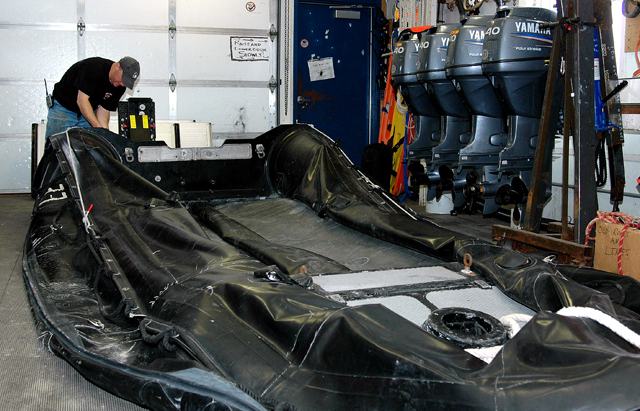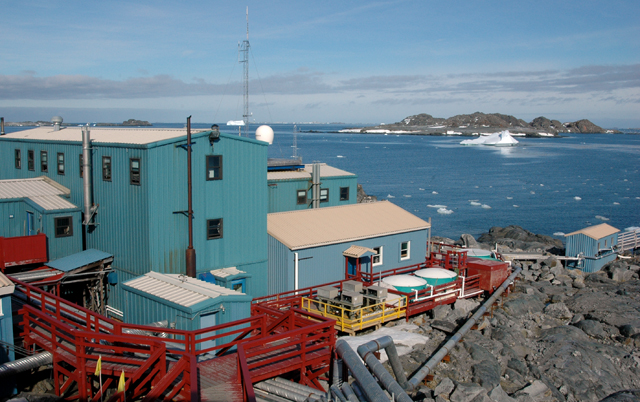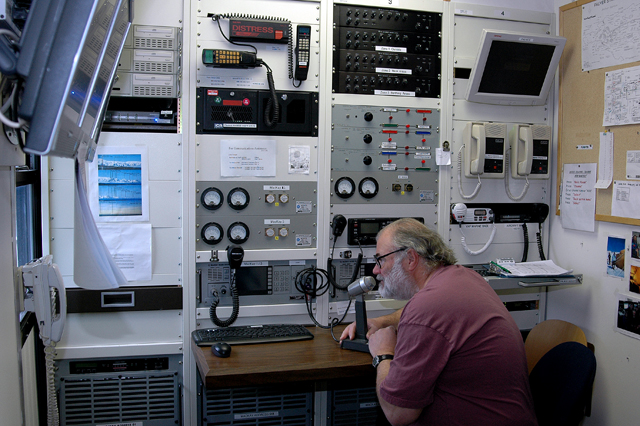Page 2/4 - Posted May 21, 2010
Unique environmental challengesZee Evans has trouble counting the number of deployments she has made to Antarctica since her first trip to McMurdo Station They are the folks who look after everything on station “without wheels on it,” she explains. January is the best time of the year for outdoor projects. This season the focus is on re-painting the wooden boardwalk, maintaining the Bio Lab structural beams, and running a new conduit line to support Terra Lab, home to various autonomous experiments. “The rain and the saltwater does create havoc with our stuff,” Evans notes. The climate is relatively mild at Palmer Station compared to points farther south, like McMurdo on the other side of the continent or South Pole Station It’s also the only place in the USAP where personnel have to worry about the local wildlife chewing on equipment. “I do a lot of patches on leopard seal bites,” says Ryan Wallace, the boating coordinator for Palmer Station, who oversees its fleet of Zodiac boats. Apparently, the large predator seals like to use the rubber pontoons for chew toys. One year, before his time, Wallace says, leopard seal bites nearly sunk one boat parked in Hero Inlet next to the station, submerging and destroying thousands of dollars in science equipment. He recently returned for his fourth season at Palmer Station to run the boathouse, a job that entails patching up the aging fleet and being a “grease monkey.” He spends the other half of the year working as a boat driver for an expedition company that runs tours around the world. It’s a no-brainer as far as which job he enjoys more. “I love the mission here,” he says. Satellite engineer Ken Kloppenborg, a large man with thick glasses, seems especially keen on the science, having worked at other research stations, including McMurdo and a site in Puerto Rico that supported a radio telescope. “It’s always interesting to be around places where scientists are going, ‘Gee whiz, look at this. We didn’t know this before,’” he says. Back 1 2 3 4 Next |



For USAP Participants |
For The Public |
For Researchers and EducatorsContact UsNational Science FoundationOffice of Polar Programs Geosciences Directorate 2415 Eisenhower Avenue, Suite W7100 Alexandria, VA 22314 Sign up for the NSF Office of Polar Programs newsletter and events. Feedback Form |




